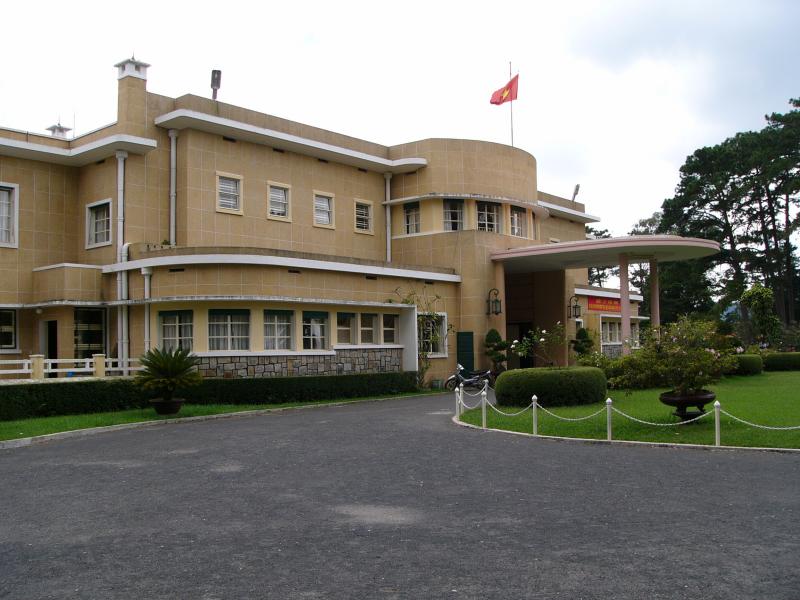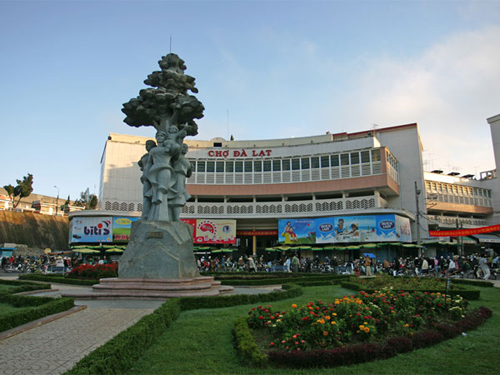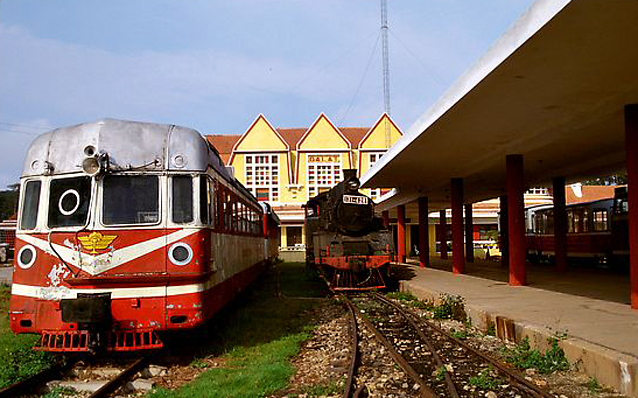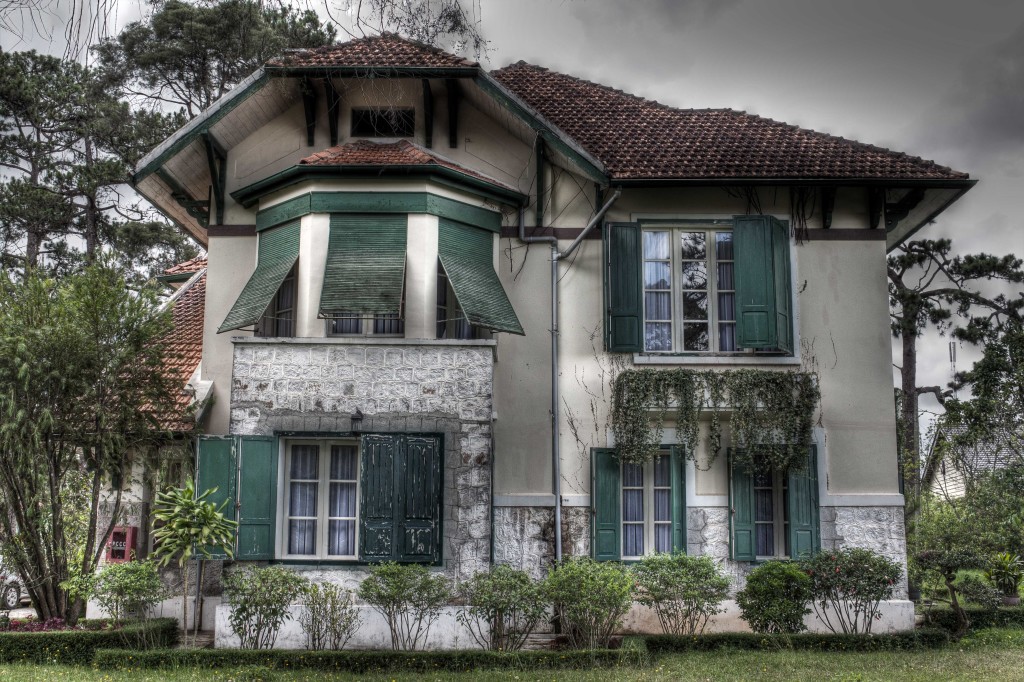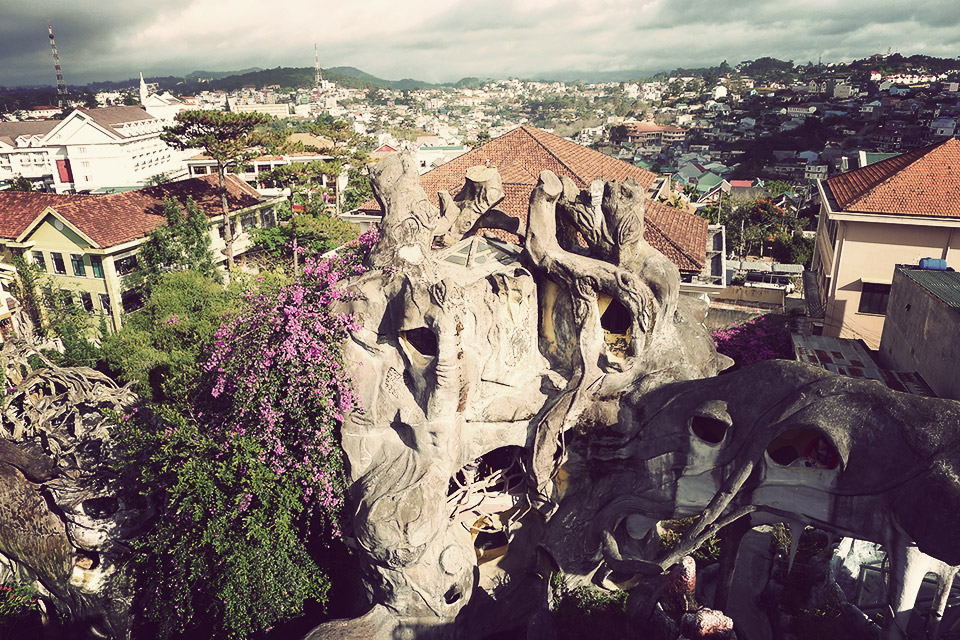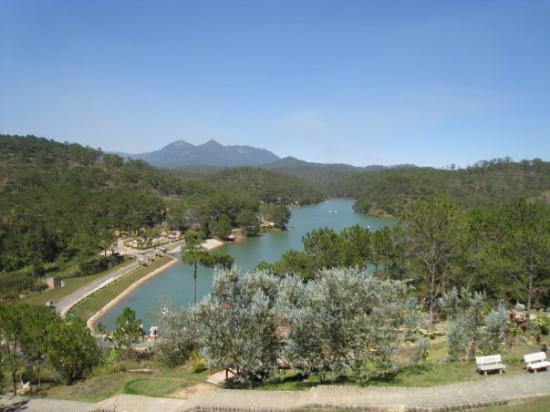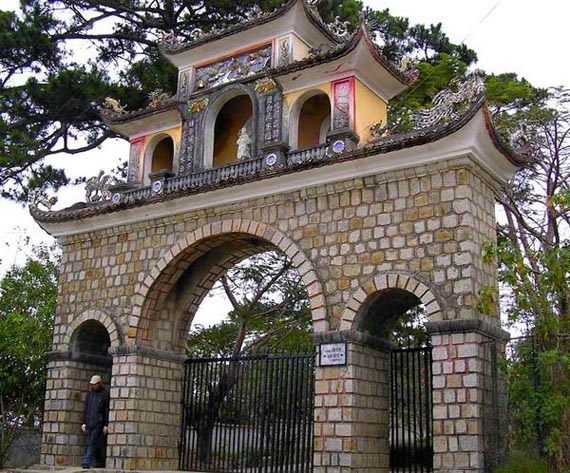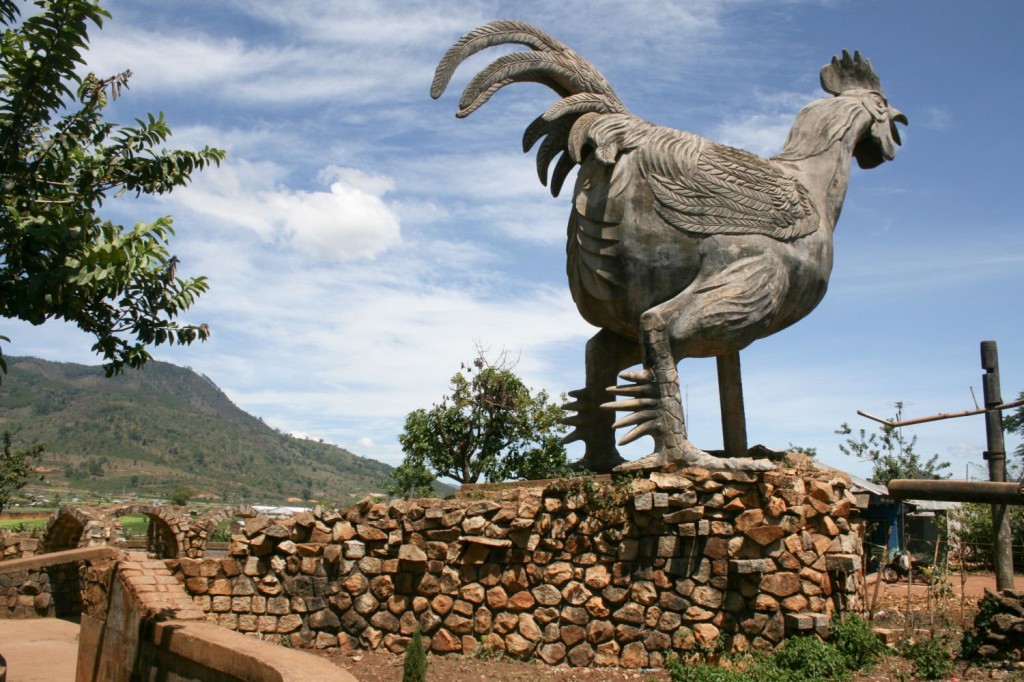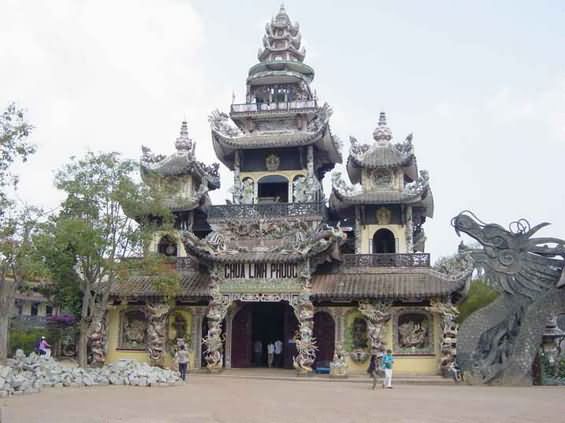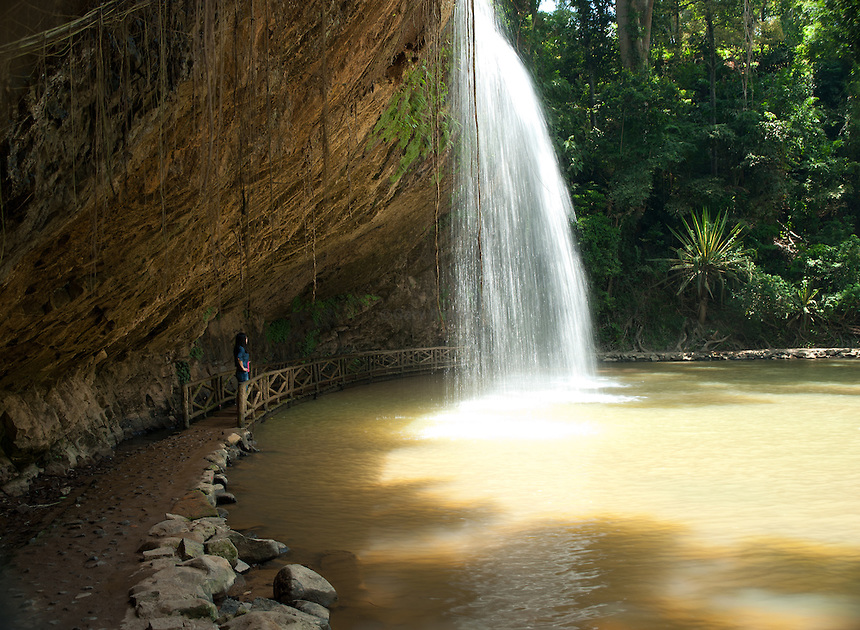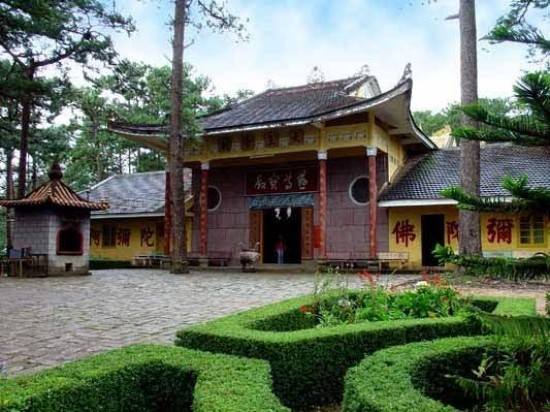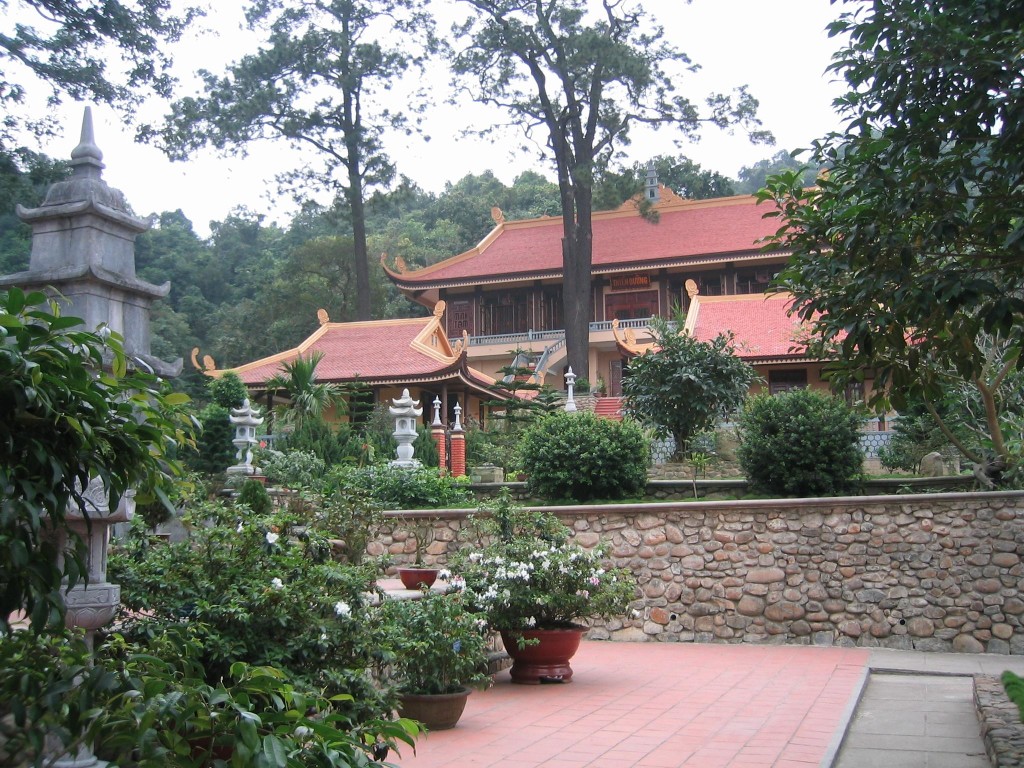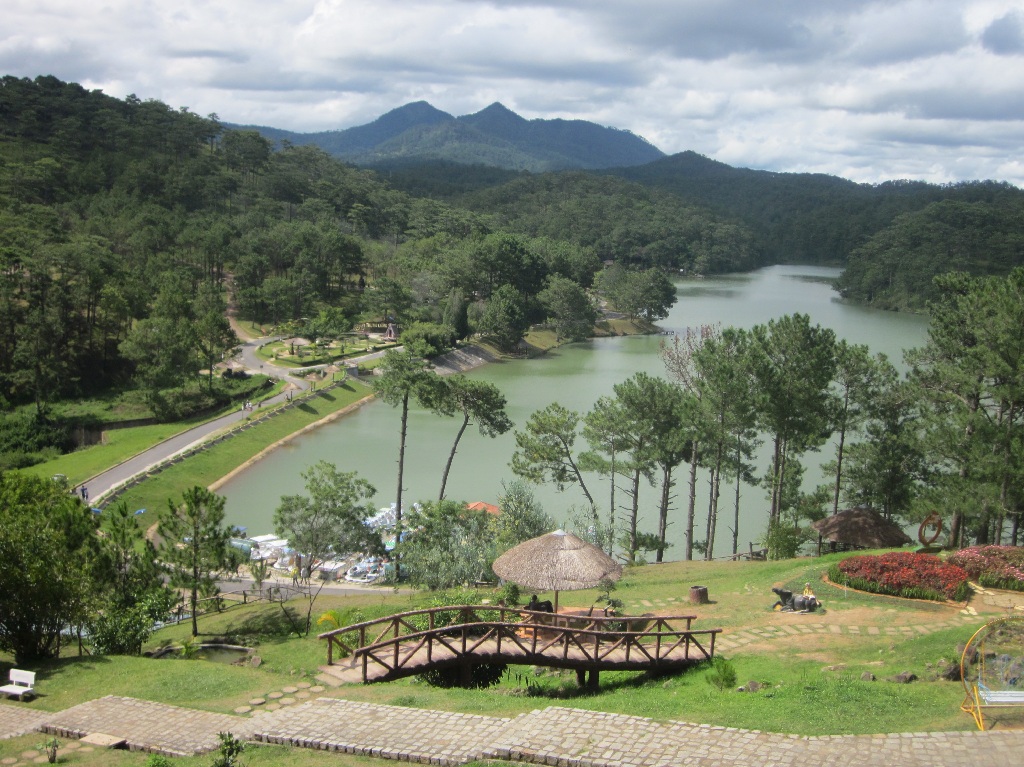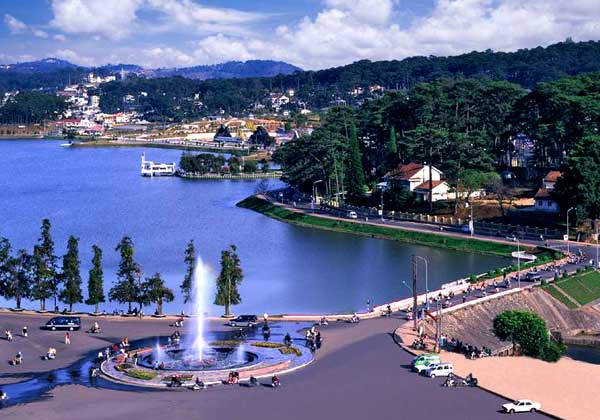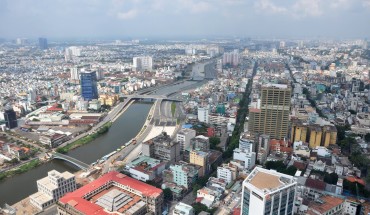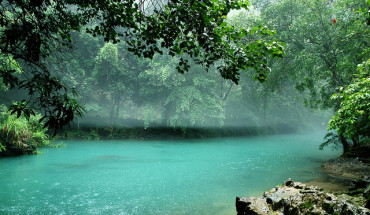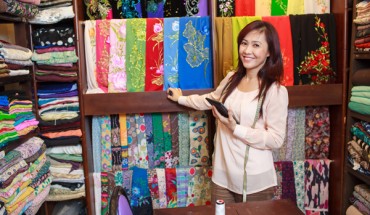Much of what there is to see in Dalat is natural sights: Lakes, waterfalls, and dams dominate the tourist trail. Things are spread over quite some distance, so consider booking a tour or renting your own car or motorbike.
If touring on your own, remember to avoid visiting pagodas between 11: 30am and 2pm, when nuns and monks will be having their lunch. You might disturb them and also 246 miss a valuable opportunity for a chat. Typical 1 day itineraries by minivan to sights outside the city include a visit to one of the falls, cither Prenn halls or Pongour Falls south of Dalat, followed by a stop at Truc Lam Monastery, the Lat (Chicken) Village, the Valley of Love, Crazy House, and a visit with the Crazy Monk, and ending with a stop at Bao Dai’s summer palace or the old train station. Most tours make stops at small silk-weaving villages where you can watch the whole process from worm to wear, as well as incense-making workshops, vegetable growing terraces, and coffee plantations.
Bao Dai’s Palace Completed in 1938, this monument to bad taste provided Bao Dai, Vietnam’s last emperor, with a place of rest and respite with his family. It has never been restored and, indeed, looks veritably untouched since the emperor’s ousting and hasty exile. On a busy weekend in high season, you might get a rush by imagining you’re there to liberate the place and are part of the looting masses that’s not hard to imagine, with the crowds ignoring any velvet ropes and posing for pictures in the aging velvet furniture. You’ll be asked to go in stocking feet or wear loose shoe covers, which makes it fun for sliding around the home’s 26 rooms, including Bao Dai’s office and the bed rooms of the royal family. You can still see the grease stains on Bao Dai’s hammock pillow and the ancient steam bath in which he soaked. The explanations are in English, and most concern Bao Dai’s family. There is pathos in reading them and piecing together the mundane fate of the former royals: This prince has a “technical” job, while that one is a manager for an insurance company. There are three other Bao Dai palaces in town, the Sofitel Dalat Palace Hotel among them, but this is the most choice.
South of Xuan Huong Lake, up the hill behind ‘Crazy House. Daily 7-11 am and 1: 30-4pm.
Dalat Market (Cho Da Lat) Huge, crowded, and stuffed with produce of all varieties, this is the top stroll-through destination in Dalat. Here’s where you can see all the local specialties and even have a try! Some of the vendors will be happy to give you a sample of some local wine or a few candied strawberries. Dalat in general is low on the has sling tourist touts that plague the big towns and tourist sites in Vietnam, and entreaties from the merchants are friendly; you can walk around without too much hassle here because the locals are doing all the shopping. The top floor of the market now houses a high-end embroidery studio, and shops catering to tourists are on the rise, but mostly what’s for sale are good local wines, preserves, and produce. Just outside the market, a number of vendors sell anything from sweetened soy milk to affordable dinners. The place is busy night and day, mostly with domestic tourists wandering the town. A fun vibe pervades it.
Central Dalat
Dalat Railway Station (Cremaillaire Railway) Built in 1943, the Dalat station offers an atmospheric slice of Dalat’s colonial history. You can see an authentic old wood burning steamer train on the tracks to the rear, and stroll around inside looking at the iron-grilled ticket windows, which are now empty. Although the steamer train no longer makes tourist runs, a newer Japanese train makes a trip to Trai Mat Street and the Linh Phuoc Pagoda (see below). A ride costs $5 and leaves when full.
Near Xuan Huong Lake, off Nguyen Trai St. Daily 8am-5pm.
The French Quarter The whole town has the look and feel of a French replica, but on the ridge-running road, Tran Hung Dao, don’t miss the derelict shells of the many French colonial summer homes once populated and popular; its where the connected and successful came to escape the Saigon heat in summer. Most are owned by the folks at Sofitel, and who’s to say what will become of them in years to come, but they are a beautiful and eerie reminder of the recent colonial past. The road itself, one you’ll take to many of the sights outside of town, offers panoramic views.
Best visited by motorbike or in a car with driver. Follow Tran Hung Dao Rd, a few kilometers southeast from town. Some of the houses are on private roads at the end of promontories.
Hang Nga Guest House and Art Gallery Otherwise known as the “Crazy House, ” this Gaudi-meets-Sesame Street theme park is one not to miss. It’s a wild mass of wood and wire fashioned into the shape of a giant tree house and smoothed over in concrete. It sounds simple, but there’s a vision to this chaos; just ask the eccentric owner/ proprietor and chief architect, Ms. Dang Viet Nga. Daughter of aristocracy, Ms. Nga is well heeled after early schooling in China and has a degree in architecture from the university in Moscow. In Dalat, she has been inspired to undertake this shrine to the curved line, what she calls an essential mingling of nature and people. The locals deem her eccentric for some reason, but she’s just misunderstood; don’t pass up any opportunity to have a chat with the architect herself. On a visit here, you’ll follow a helpful guide and are sure to have fun clambering around the concrete ladders, tunnels, hollowed-out nooks, and unique “theme” rooms of this huge fantasy tree trunk. It’s an actual guest- house, too, but it offers more theme than comfort. It’s better just to visit than to stay. There’s a small family shrine in a large common area at the back. It all spoke to me about Vietnam’s refreshingly lax zoning laws, but to many it’s an interesting, evolving piece of pop art. This is a fun visit.
3 Huynh Thuc Khang St. 063/382-2070. Daily 7am-6pm.
Lake of Sighs (Ho Than Tho) This lake has such romantic connotations for the Vietnamese that you would think it was created by a fairy godmother rather than French dam work. Legend has it that a 15-year-old girl named Thuy drowned herself after her boyfriend of the same age, Tam, fell in love with another. Her gravestone still exists on the side of the lake, marked with the incense and flowers left by other similarly heartbroken souls, even though the name on the headstone reads “Thao,” not “Thuy. ” The place is crammed with honeymooners in paddle boats and motorboats.
Northeast of town, along Ho Xuan Huong Rd. Daily 7am-5pm.
Lam Ty Ni Pagoda Home of Thay Vien Thuc, “The Crazy Monk” A visit with the man is a highlight for some and just plain creepy for others. The temple itself is nothing special, though the immaculate garden in the back is nice; the attraction here is Mr. Thuc’s large studio. Thuc, a Vietnamese Zen practitioner, seems to be painting, drawing, and scribbling his way to Nirvana. It’s a unique glimpse into the inner sanctum of a true eccentric, and though locals say that he’s not a real monk, just a painter and salesman, it’s an interesting visit. Perhaps a polyglot afflicted with graphophilia (a language genius who can’t stop drawing), Mr. Thuc has a message of “peace and connectedness” characteristic of the Zen sect, and he conveys that message in Vietnamese, Chinese, French, English, Japanese, German, and Swedish as he continually cranks out poems with small stylized drawings when you talk with him. Your part in the plan is that, for $1 (a bargain), he’ll scribble an original before your eyes and pose for a photo; he has tentative plans to visit everyone who buys one of his paintings and bring us all together.
You are free to ask him questions, browse his stacks of finished works in the studio, and sign the guest book. This is a standard stop on city/country tours.
2 Thien My, Dalat. 063/382-1775. most feel obliged (or compelled) to buy one of his paintings.
Lat Village (Chicken Village) A village of the Co Ho minority people, the Lat, or “Chicken, ” Village is usually part of the all-day tours in the hills around Dalat. Why chicken? Well, there is an enormous cement statue of a chicken at the entry to town- the bird has to do with a village legend (ask your guide—I’ve heard about four different versions of the story, and each is a hoot). The Co Ho people are very used to the many foreign visitors who come here every day; trinket sellers are not pushy, and you are free to walk about this rustic little town at your own pace.
About 16km (10 miles) south of Dalat.
Linh Phuoc Pagoda Here is another example of one of Vietnam’s fantasyland glass-and-ceramic mosaic structures. Refurbished in 1996, this modern temple features a huge golden Buddha in the main hall, and three floors of walls and ceilings painted with fanciful murals. Go to the top floor for the eye-boggling Bodhisattva room and views of the surrounding countryside. In the garden to the right, there is a 3m-high (10-ft.) dragon climbing in and out of a small lake. You’ll find very cool little nooks and crannies to explore.
At the end of Trai Mat St. (20 min. by car/bike). Daily 8am-5pm.
Prenn Falls The falls are actually quite impressive, especially after a good rain. You can ride a rattletrap little cable car over them if you’re brave or follow a stone path behind the falling water (prepare to get your feet wet). That’s a little thrill, of course, but the true Prenn experience is all about staged photos for Vietnamese tourists: couples preening, boys looking macho, and girls looking wan and forlorn. Professional photographers run the show and pose their willing actors on a small wooden bridge, on the back of a cost turned horse, with an arm around a guy in a bear suit, on a small inflatable raft in from of the falls, or perched in one of the cool tree houses high above (be careful of the loose rungs when climbing up). Come here to have a laugh and observe until you find out that, as a foreign tourist, it’s you that’s being observed; in that case, say “Xin chao”(pronounced sin chow) or return a few “hellos” and go from there (you’ll be getting your photo snapped, for sure). You might walk away with some new chums, not to mention some souvenirs (plastic samurai sword, anyone? ). Other falls in the area include the Gougah Falls, some 40km (25 miles) south of Dalat, as well as Pongour Falls, 55km (34 miles) south.
At the foot of Prenn Mountain pass, 10km (6,25 miles) south of Dalat. Daily 7am- 5pm.
Thien Vuong Pagoda Otherwise known as the “Chinese Pagoda,” built as it was by the local Chinese population, this structure (ca. 1958) is unremarkable except for its serene setting among the hills of Dalat and the very friendly nuns who inhabit it. It does have three awe-inspiring sandalwood Buddhist statues that have been dated to the 16th century. Each statue is 4m (13 ft.) high and weighs 1,5 tons. Left to right, they are Dai The Chi Bo Tat, god of power; Amithaba or Sakyamuni, Buddha; and Am Bo Tat, god of mercy.
3km (1,75 miles) southeast of town at the end of Khe Sanh St. Daily 9am-5pm.
Truc Lam (Bamboo Forest) Zen Monastery What’s refreshing is that you can walk around Truc Lam with no harassment, unlike many other temples and most pagodas in Vietnam. This is a working temple, and though it’s packed with tourists at certain times of the day, you’ll be wandering amid meditation halls and classrooms that are utilitarian, not museum pieces. You’ll get to see monks at work and have an informative glimpse into the daily rhythms of temple life. The complex was completed in 1994 with the aim of giving new life to the Truc Lam Yen Tu Zen sect, a uniquely Vietnamese form of Zen founded during the Tran dynasty (1225-1400). Adherents practice self- reliance and realization through meditation. The shrine, the main building, is notable mainly for its simple structure and peaceful air, and there is a large relief sculpture of Boddhidarma, Zen’s wild-eyed Indian heir, at the rear of the main temple. The scenery around the monastery, with views of the nearby man mode lake, Tuyen Lam Lake, and surrounding mountains, is breathtaking. Truc Lam can now be reached by a scenic tram ride from a hilltop overlooking Dalat; a motorbike or taxi to the tram station costs little, and the round-trip is
Near Tuyen Lam Lake, 6km (3,75 miles) from Dalat. A popular spot on any countryside tour. Daily 7am-5pm.
Valley of Love The Valley is scenic headquarters in Dalat and a popular stop-over for honeymooners. It’s a good place to find some really bizarre kitsch, the kind whose precedent can only be roadside America; here, I mean guys in bear suits and huge-headed cowboys with guns that spout “bang” flags. There are a few nice walking paths among the rolling hills and quaint little lakes, and everyone enjoys the antics of Vietnamese honeymooners zipping around on motorboats and posing for pictures with guys in fuzzy jumpsuits. Don’t miss it.
Phu Dong Thien Vuong St., about 3. 2km (2 miles) north of town center. Daily 6am-5pm.
Xuan Huong Lake Dalat’s centerpiece, Xuan Huong, was created from a dam project that was finished in 1923, demolished by a storm in 1932, and reconstructed and rebuilt (with heavier stone) in 1935. The water originates as a trickle in the faraway Lat (Chicken) Village. You can rent windsurfing boards and swan-shape paddle boats, but I’ve never seen anyone out on the lake (only in the brochures). This is Dalat’s other prime strolling territory (you walk here from the nearby market), and you’re sure to see newlyweds, some wearing full wedding regalia, posing for pictures or staring longingly into one another’s eyes as their life together begins. You’ll see saddled horses and horse carts that Vietnamese tourists rent for staged photos. It’s about 5 short kilometers (3 miles) around the perimeter, a nice walk in the early evening, and closer to town are some cool little local cafes over the water where you can stop for a Cafe Sua (a robust cofee made of locally grown beans and dripping with ultrasweet condensed milk).
Central Dalat.
You may be interested in Dalat tours.


